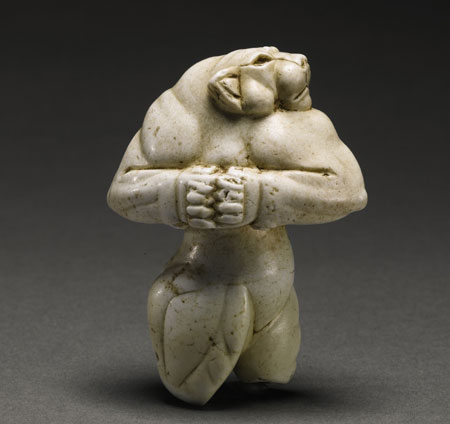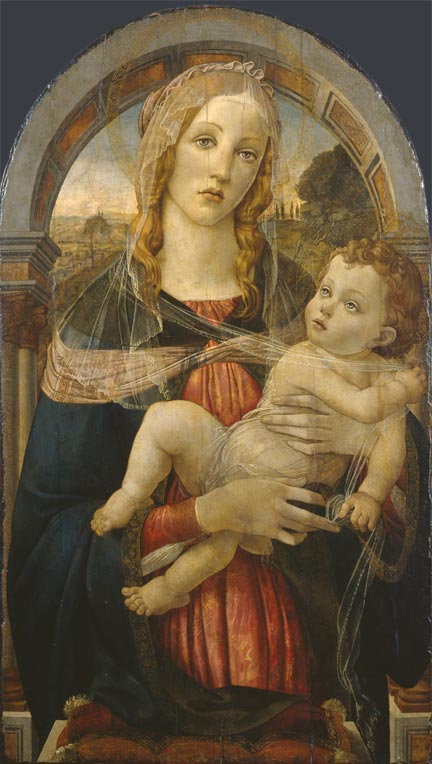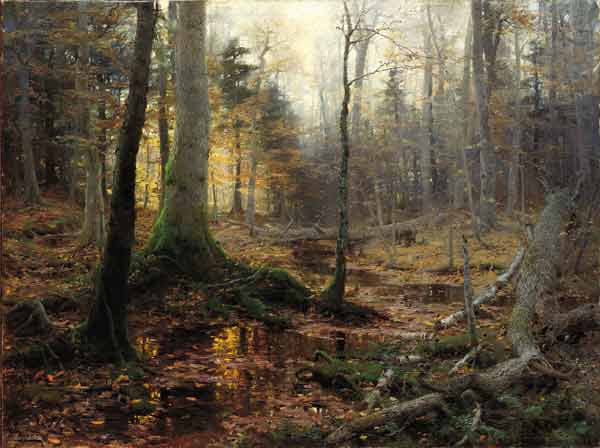On 8 Oct, 2010 With
Relational Art Relational Art or “Relational Aesthetics” is a mode or tendency in fine art practice originally observed and highlighted by French art critic Nicolas Bourriaud. Bourriaud defined the approach simply as, “a set of artistic practices which take as their theoretical and practical point of departure the whole of human relations and their social context, rather than an independent and private space.” Origin of the term One of the first attempts to analyze and categorize art from the 1990s, the idea of Relational Art was developed by Nicolas Bourriaud in 1998 in his book Esthétique relationnelle(Relational Aesthetics). The term was first used in 1996, in the catalogue for the exhibition Traffic curated by Bourriaud at CAPC musée d’Art contemporain de Bordeaux. Trafficincluded…
Read More
On 7 Oct, 2010 With
Visionary art is art that purports to transcend the physical world and portray a wider vision of awareness including spiritual or mysticalthemes, or is based in such experiences. Definition The American Visionary Art Museum defines Visionary art as “….art produced by self-taught individuals, usually without formal training, whose works arise from an innate personal vision that revels foremost in the creative act itself.” It goes on to say that visionary art is a product of an inner process, and may not even be thought of as art by its creator; it also differentiates Visionary art from Folk art. Alexander Beiner, host of Visionary Artists Podcast, has proposed an alternative definition, suggesting that “Visionary Art is any art that seeks to represent or explore mystical experience. As…
Read More
On 5 Oct, 2010 With
Dante Gabriel Rossetti. The Pre-Raphaelite Brotherhood (also known as the Pre-Raphaelites) was a group of English painters, poets, and critics, founded in 1848 by William Holman Hunt, John Everett Millais and Dante Gabriel Rossetti. The three founders were soon joined by William Michael Rossetti,James Collinson, Frederic George Stephens and Thomas Woolner to form a seven-member “brotherhood”. The group’s intention was to reform art by rejecting what they considered to be the mechanistic approach first adopted by the Mannerist artists who succeeded Raphael and Michelangelo. They believed that the Classical poses and elegant compositions of Raphael in particular had been a corrupting influence on the academic teaching of art. Hence the name “Pre-Raphaelite”. In particular, they objected to the influence of Sir Joshua Reynolds, the founder of the English Royal Academy of Arts. They called him “Sir Sloshua”,…
Read More
On 4 Oct, 2010 With
Young British Artists Young British Artists or YBAs (also referred to as Brit artists and Britart) is the name given to a group of conceptual artists, painters, sculptors and installation artists based in the United Kingdom, most (though not all) of whom attended Goldsmiths College in London. The term Young British Artists is derived from shows of that name staged at the Saatchi Gallery from 1992 onwards, which brought the artists to fame. It has become a historic term, as most of the YBAs are now in their forties. They are noted for “shock tactics”, use of throwaway materials and wild-living, and are (or were) associated with the Hoxton area of East London. They achieved considerable media coverage and dominated British art during the 1990s. Leading artists of the group…
Read More
On 3 Oct, 2010 With
Street art is any art developed in public spaces — that is, “in the streets” — though the term usually refers to unsanctioned art, as opposed to government sponsored initiatives. The term can include traditional graffiti artwork, stencil graffiti, sticker art, wheatpasting and street poster art, video projection, art intervention, guerrilla art, flash mobbing and street installations. Typically, the term street art or the more specificpost-graffiti is used to distinguish contemporary public-space artwork from territorial graffiti, vandalism, and corporate art. Artists have challenged art by situating it in non-art contexts. ‘Street’ artists do not aspire to change the definition of an artwork, but rather to question the existing environment with its own language. They attempt to have their work communicate with everyday people about socially relevant themes in ways that are informed by…
Read More
On 30 Sep, 2010 With
The highest auction price ever achieved by a sculpture 2007: The highest auction price ever achieved by a sculpture: the 5,000-year old Guennol Lioness, a 3 1/4-inch limestone lion from ancient Mesopotamia. Sold for $57 million. Source: visual-arts-cork.com
Read More
On 27 Sep, 2010 With
Genuine fakes by Ben East Fakes and forgeries were once the embarrassment of the art world. No august gallery, no famous auction house is entirely free from the stain of a costly error of provenance. It was ever thus: one of the first acquisitions by the National Gallery in London was proudly unveiled in 1847 as a major painting by the 16th-century artist Hans Holbein. It was, they said, a purchase of “national significance”. But within weeks, doubt was cast on its authenticity, the attribution to Holbein was scrubbed and the gallery’s first director, Sir Charles Lock, resigned. Two centuries on, you’d forgive Lock a wry smile. Duped galleries and experts can now feel reassured that even if they do…
Read More
On 23 Sep, 2010 With
Naturalism Naturalism in art refers to the depiction of realistic objects in a natural setting. The Realism movement of the 19th century advocated naturalism in reaction to the stylized and idealized depictions of subjects in Romanticism, but many painters have adopted a similar approach over the centuries. One example of Naturalism is the artwork of American artist William Bliss Baker, whose landscape paintings are considered some of the best examples of the naturalist movement. Another example is the French Albert Charpin, from the Barbizon School,with his paintings of sheep in their natural settings. An important part of the naturalist movement was its Darwinian perspective of life and its view of the futility of man up against the forces of nature. Naturalism began in the…
Read More
On 22 Sep, 2010 With
Eric Hebborn (1934- 11 January 1996) was a British painter and art forger and later an author. Early life Eric Hebborn was born in the London suburb of South Kensington to a Cockney family in 1934, although his mother was a gipsy. According to his autobiography, his mother beat him constantly as a child. At the age of eight, he states that he set fire to his school and was sent to Longmoor reformatory in Harold Wood, although his sister Rosemary disputes this. Teachers encouraged his painting talent and he became connected to the Maldon Art Club, where he first exhibited at the age of 15. Hebborn attended Chelmsford Art School and Walthamstow Art School before attending the Royal Academy. He flourished at the Academy, winning the Hacker Portrait prize…
Read More
On 21 Sep, 2010 With
A dandy (also known as a beau and gallant) is a man who places particular importance upon physical appearance, refined language, and leisurely hobbies, pursued with the appearance of nonchalance in a cult of Self. Historically, especially in late 18th- and early 19th-century Britain, a dandy, who was self-made, often strove to imitate an aristocratic style of life despite coming from a middle-class background. Though previous manifestations, of Alcibiades, and of the petit-maître and the muscadin have been noted by John C. Prevost, the modern practice of dandyism first appeared in the revolutionary 1790s, both in London and in Paris. The dandy cultivated skeptical reserve, yet to such extremes that the novelist George Meredith, himself no dandy, once defined “cynicism” as “intellectual dandyism”; nevertheless, the Scarlet Pimpernel is one of the great dandies of…
Read More




